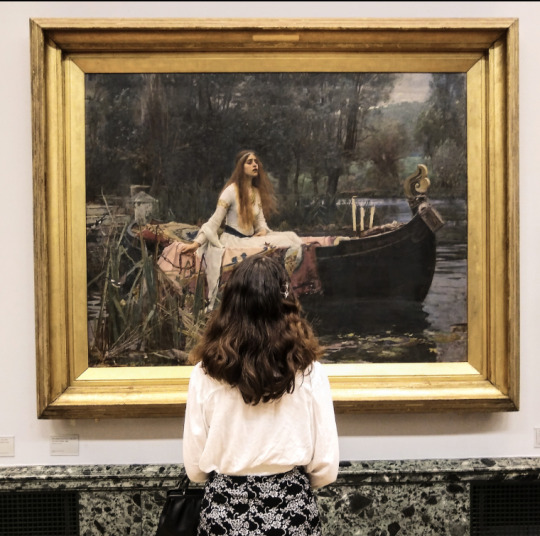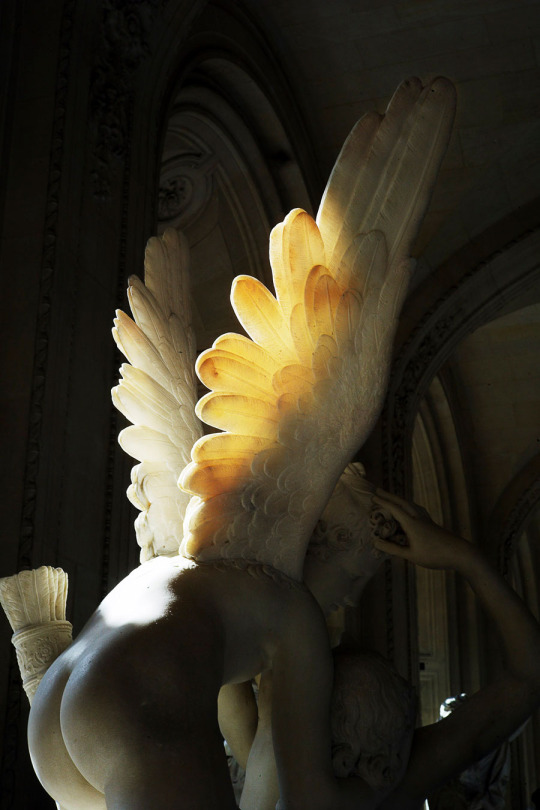Text










the struggle to love
R.F Kuang, The Dragon Republic (deleted scene) | Sleeping at Last, “Neptune” | Richard Siken, War of the Foxes | Clarice Lispector, The Stream of Life | Sylvia Plath, The Unabridged Journals of Sylvia Plath | Franz Kafka, Diaries (1910-1923) | Jeanette Winterson, Why Be Happy When You Could Be Normal? | Gabrielle Zevin, Tomorrow, and Tomorrow, and Tomorrow | Anne Carson, Autobiography of Red | Richard Siken, “Wishbone”
1K notes
·
View notes
Text

Virginia Woolf, from a letter to Lytton Strachey, featured in The Selected Letters of Virginia Woolf
2K notes
·
View notes
Text
“Everyone says love hurts, but that is not true. Loneliness hurts. Rejection hurts. Losing someone hurts. Envy hurts. Everyone gets these things confused with love, but in reality love is the only thing in this world that covers up all pain and makes someone feel wonderful again. Love is the only thing in this world that does not hurt.”
— Meša Selimović
612 notes
·
View notes
Text


Evening Gown
c. 1898-1900
Musée des Arts Décoratifs
3K notes
·
View notes
Note
What's the difference between the Tuatha de Danann and the Sidhe?

Sídhe (pronounced ‘she’) literallly means ‘mounds’ in Irish, but is used as an abbreviated form of the Irish literary term daoine sídhe which refers to the people of the mounds. Another, less literary, term is the aos sí or aos sídhe meaning the same. These are general terms for what we think of as essentially faeries or elves in Irish and Scottish folklore and mythology. I believe the use of sídhe to refer to the daoine or aos sídhe was first used by W.B. Yeats.The aos sídhe are often thought of as being the ancient pagan ancestors and souls of the dead, or variously as being the old pagan gods themselves who diminished in size and power as time left them abandoned. Others just see them as a completely separate species. Then there are various types that are named, such as the bean sídhe or woman of the sídhe which refers to the female spirit who screams and wails to foretell a death (particularly in the family), or the bean nighe or washerwoman who cleans the bloody clothes and armor of the dead before they die. The leanan sídhe or fairy lover is the beautiful sídhe who seduces and sometimes marries men, while the siabhra may have been a lesser spirit prone to evil and mischief. There are also cat síth (fairy cat) and cu síth (fairy dog) and the sluagh sídhe or the Fairy Host, which is equatable with the Wild Hunt or Furious Hoarde.


The Tuatha dé Danann is literally translated as the Tribe of (goddess) Danu. They are interpreted as the ancient supernatural and magically-gifted race that inhabited Ireland after defeating the Fir Bolg who lived there before. They inhabited Ireland until they were defeated by the invading Milesians.

Some people argue that these were the ancient Celtic deities, but this is a modern concept that we like to agree with, rather than one that is actually substantiated by history. We don’t have any proof that Prehistoric Ireland worshiped any humanoid deities. In fact, we have no evidence of humanoid archaeological finds from Irish pre-history that weren’t imported to the Island. All ancient Irish art, even religious, seems to have been composed solely of geometrical and abstract designs. Certainly the Gaulish Celts and almost as certainly the British Celts worshiped anthropomorphic deities, which possessed relatively the same names as the Irish Tuatha dé Danann, but we know that the Celtic religion differed greatly from place to place, even though the Druids themselves had a central school and power it does not mean that there were not sects of Celtic religion.It seems almost more likely that the Irish Celts worshiped natural features such as rivers, glens, hills and mountains, possibly some life force or sense of spirit, but understood the Tuatha dé Danann as they were recorded: solely a tribe of magical ancestors, gifted in particular areas such as healing, battle, or magic. The only sources that recorded them as gods in any way were centuries after, and heavily influenced by the Roman-pagan and then Christian religious mindsets The Tuatha dé Danann were kings, queens, and heroes. Kings, queens, and heroes are not often worshiped religiously.
From the poem Lebor Gabála Érenn:
It is God who suffered them, though He restrained them
they landed with horror, with lofty deed, in their cloud of mighty combat of spectres, upon a mountain of Conmaicne of Connacht.
Without distinction to descerning Ireland, Without ships, a ruthless coursethe truth was not known beneath the sky of stars, whether they were of heaven or of earth.


How are they different from the daoine or aos sídhe?As the majority of my responses go, it depends who you ask! Some people believe(d) that the aos sídhe were later forms of the Tuatha dé Danann, others believe(d) that they are what is left of that tribe who retreated into the Otherworld or underground into the mounds after their defeat. While the Tuatha dé Danann are referred to more mythologically and specifically, the sídhe or aos sídhe are referred to more folkloricistically and generally. Until the mid-20th century, and even still in some parts of Britain and Ireland today, it is not totally uncommon to leave offerings or gifts for the sídhe (good people, fairy folk, the folk), while worship of the Tuatha dé Danann is stranger and more pagan.
3K notes
·
View notes
Text


L. V., i found this poem at the tip of your lit cigarette
28 notes
·
View notes
Text
“La famiglia è una menzogna costruita da chi organizzò questo mondo per controllare meglio la gente, sfruttarne meglio l'obbedienza alle regole e alle leggende. Ci si ribella più facilmente quando si è soli, ci si rassegna più facilmente quando si vive con altri. La famiglia non è che il portavoce di un sistema che non può lasciarti disubbidire, e la sua santità non esiste. Esistono solo gruppi di uomini e donne e bambini costretti a portare lo stesso nome ed abitare sotto lo stesso tetto: detestandosi, odiandosi, spesso. Però il rimpianto esiste, e i legami esistono, radicati in noi come alberi che non cedono neanche all'uragano, inevitabili come la fame e la sete. Non te ne puoi mai liberare, anche se ci provi con tutta la tua volontà, la tua logica. Magari credi di averli dimenticati e un giorno riaffiorano, irrimediabilmente, spietati, per metterti la corda al collo più di qualsiasi boia. E strozzarti.”
1 note
·
View note
Text
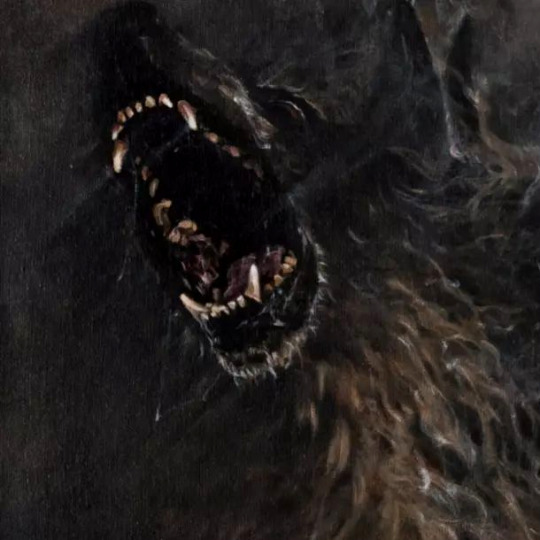
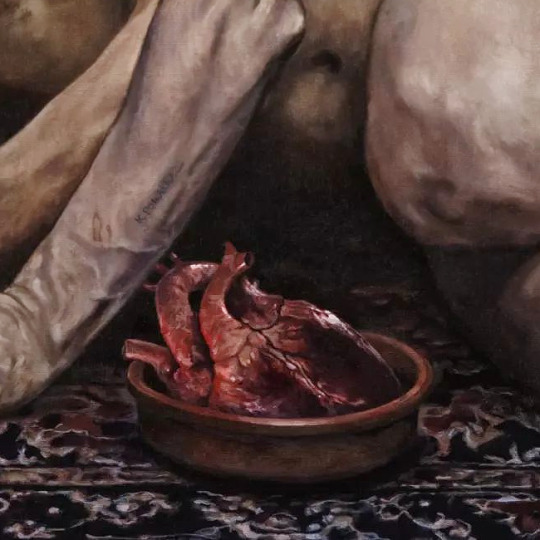

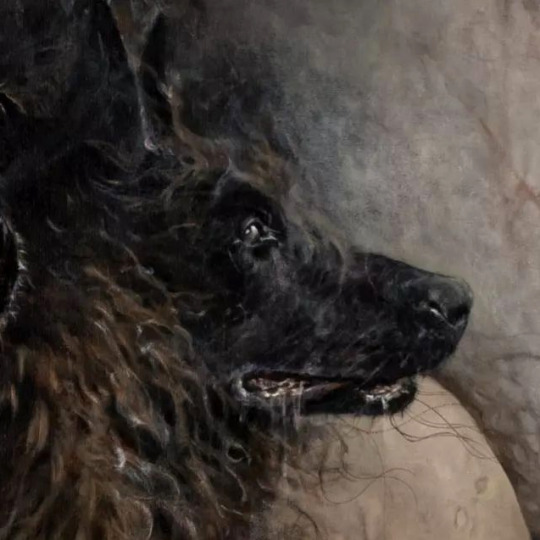
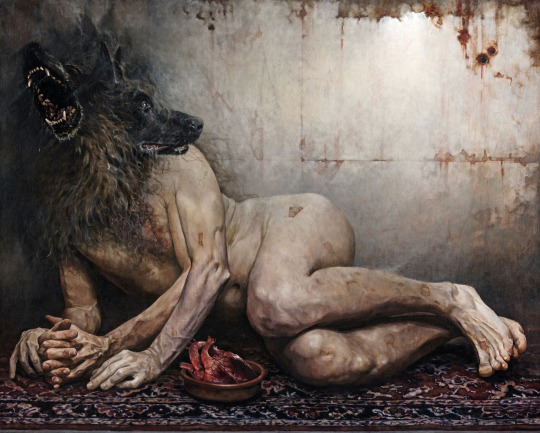
Wara! 2023 - oil on canvas — Krzysztof Powałka (Polish, b.1985)
https://www.instagram.com/k.powalka_oilpaintings
32K notes
·
View notes
Text
In onore della Festa di Maria Maddalena condivido alcune riflessioni sul valore del Matrimonio Alchemico tra la Donna e Uomo, come frutto del percorso verso l'Unità Interiore e l'acquisizione dello stato di coscienza dell'Androginia, maschile e femminile in perfetto equilibrio:
La donna è il contenuto dell’uomo, lui è il contenitore, la protegge e fa in modo che lei possa fiorire. Lei si sentirà vista, amata, apprezzata, si fiderà e porterà i frutti del mutuo amore alla massima manifestazione
Le donne sono portatrici sane di Vuoto, il grande Vuoto creativo contenuto all’interno del loro ventre. Questo è l’athanor, il laboratorio alchemico dove avviene la piccola esplosione nucleare che dà inizio alla Vita
Gli antichi alchimisti erano sempre affiancati da una donna, la Sorella Mistica, cosicché nell’unione delle due metà complementari si formasse il sacro cerchio.
La donna è l'angelo del focolare, custode del fuoco che mantiene viva la relazione; l’uomo agisce affinché nulla e nessuno metta in pericolo la donna nella sua meditazione interiore.
L’uomo e la donna creano allora un’unione sacra tra i cuori in una promessa di cura e presenza reciproca.
La donna è anche il contenitore del cuore dell’uomo, che viene trasformato dal calore del sacro fuoco dell’athanor, il laboratorio alchemico interiore.
L’uomo protegge la donna e si sente protetto da lei nella sua parte più fragile, quella di cui spesso egli stesso si vergogna.
Ogni volta che l’uomo permette alla donna di accoglierlo tra le braccia portandole la propria parte vulnerabile, quell’uomo è nell’amore totale perché smette di avere paura.
La comunione raggiunta in quel momento dai due cuori è sublime e lì avviene la fusione profonda; entrambi si disfano delle proiezioni reciproche, diventano adulti, si accettano per ciò che sono e si abbandonano all’altro.
Lei danza e lui protegge la sua danza, imparando da lei i passi dell’ardore del sognare. A sua volta lui le insegna ad essere cauta e coraggiosa come un guerriero affinché possa andare sicura nel mondo.
Mutuo sostegno nel cammino dell'incontro con l'Altro all'interno del sé, per sollevare il velo dell'illusione del senso di separazione
Stefania Marinelli
6 notes
·
View notes
Text
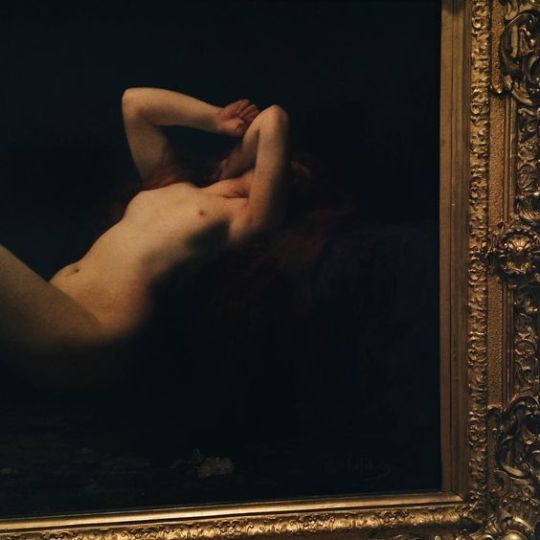
Jules-Joseph Lefebvre, Maria Maddalena nella grotta
96 notes
·
View notes
Photo
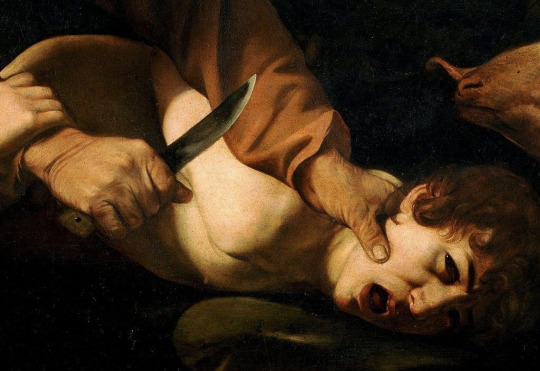
Title: Sacrifice of Isaac (detail) Artist: Caravaggio Date: ca. 1598 Medium: Oil on canvas Size: 116 cm × 173 cm
3K notes
·
View notes



